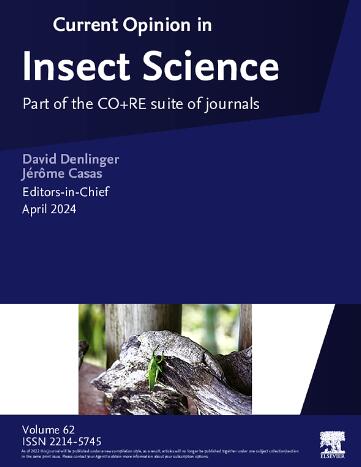甲壳类动物性别分化:从十足动物的角度看。
IF 4.8
1区 农林科学
Q1 BIOLOGY
引用次数: 0
摘要
甲壳类动物的性别分化受遗传、激素和环境因素的影响,具有显著的种间多样性。这篇综述强调了十足类动物的关键机制,包括双性生殖等遗传途径和物种特异性变异,如多刺龙虾的y连锁iDMY基因。雄性分化是由雄激素腺及其胰岛素样激素驱动的,而雌性分化则涉及眼柄神经肽如性腺抑制激素。环境因素,如密度,影响灵活的遗传系统。这些发现有助于操纵性别比例,并通过生物技术进步为水产养殖提供信息。像CRISPR这样的新兴工具有望更深入地了解甲壳类动物的性别分化。本文章由计算机程序翻译,如有差异,请以英文原文为准。
Crustacean sexual differentiation: a decapod perspective
Sexual differentiation in crustaceans is shaped by genetic, hormonal, and environmental factors, with notable interspecies diversity. This review highlights key mechanisms in decapods, including genetic pathways like Doublesex and species-specific variations, such as the Y-linked iDMY gene in spiny lobsters. Male differentiation is driven by the androgenic gland and its insulin-like hormone, while female differentiation involves eyestalk neuropeptides like gonad-inhibiting hormone. Environmental factors, such as density, influence flexible genetic systems. These findings aid aquaculture by enabling sex ratio manipulation and inform conservation through biotechnological advances. Emerging tools like CRISPR promise deeper insights into crustacean sexual differentiation.
求助全文
通过发布文献求助,成功后即可免费获取论文全文。
去求助
来源期刊

Current opinion in insect science
BIOLOGYECOLOGYENTOMOLOGY-ECOLOGY
CiteScore
10.40
自引率
1.90%
发文量
113
期刊介绍:
Current Opinion in Insect Science is a new systematic review journal that aims to provide specialists with a unique and educational platform to keep up–to–date with the expanding volume of information published in the field of Insect Science. As this is such a broad discipline, we have determined themed sections each of which is reviewed once a year.
The following 11 areas are covered by Current Opinion in Insect Science.
-Ecology
-Insect genomics
-Global Change Biology
-Molecular Physiology (Including Immunity)
-Pests and Resistance
-Parasites, Parasitoids and Biological Control
-Behavioural Ecology
-Development and Regulation
-Social Insects
-Neuroscience
-Vectors and Medical and Veterinary Entomology
There is also a section that changes every year to reflect hot topics in the field.
Section Editors, who are major authorities in their area, are appointed by the Editors of the journal. They divide their section into a number of topics, ensuring that the field is comprehensively covered and that all issues of current importance are emphasized. Section Editors commission articles from leading scientists on each topic that they have selected and the commissioned authors write short review articles in which they present recent developments in their subject, emphasizing the aspects that, in their opinion, are most important. In addition, they provide short annotations to the papers that they consider to be most interesting from all those published in their topic over the previous year.
 求助内容:
求助内容: 应助结果提醒方式:
应助结果提醒方式:


